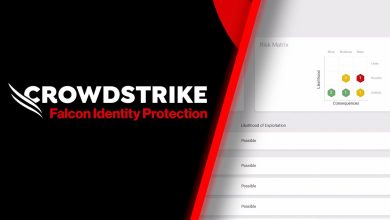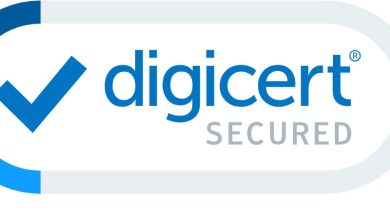The Critical Role of SysAdmins in Protecting Privileged Access
An Opportunity to Modernise Access Controls and Eliminate Legacy Vulnerabilities

Every July, we recognise SysAdmin Day on the 25th, a global nod to the unsung heroes who keep our digital infrastructure running smoothly. From maintaining uptime to safeguarding systems, system administrators (sysadmins) are often the first and last line of defence against cybersecurity threats. This day of recognition also presents a critical moment for system administrators and CISOs in the Asia-Pacific (APAC) region to reflect on one of their most persistent and high-stakes challenges: securing privileged accounts.
Privileged accounts are the gateway to an organisation’s most sensitive data and systems. If compromised, they can provide attackers with unfettered access to internal networks, customer information, financial records, and more. The consequences can be catastrophic, ranging from data breaches and ransomware attacks to regulatory penalties and reputational fallout.
In APAC, the rapid pace of digital transformation, combined with the increasing number of cloud and hybrid environments, has made Privileged Access Management (PAM) even more complex. From cloud migration to remote work and third-party integrations, the risk landscape continues to expand, and privileged accounts are at the centre.
PAM for APAC: A Complex, Evolving Landscape
The APAC region presents a unique mix of challenges. Organisations are navigating a patchwork of local and international data protection laws while balancing rapid digitalisation and business growth with uneven levels of cybersecurity maturity. As infrastructure becomes increasingly complex, so do the access controls needed to secure it.
In many cases, IT teams often lack a centralised way to manage access, leading to limited visibility, inconsistent enforcement, and heightened risk. From shared admin credentials in legacy systems to excessive permissions in multi-cloud environments, these gaps leave the door open for threat actors.
Top Challenges and How to Overcome Them
Below are the key privileged access challenges facing APAC organisations today, along with practical steps for sysadmins and CISOs to address them.
1. Lack of Visibility and Control Over Privileged Accounts
Many organisations don’t have a clear view of who holds privileged access or how it’s being used. This lack of visibility creates serious blind spots.
Solution: Deploy a centralised PAM solution that offers real-time monitoring, approval workflows, and detailed audit trails. Moving away from spreadsheets and manual tracking allows teams to maintain oversight and accountability across the entire access lifecycle.
2. Inconsistent Access Control Policies
Over-permissioned users and ad hoc policies can lead to dangerous access sprawl, undermining both security and compliance efforts.
Solution: Enforce the Principle of Least Privilege (PoLP) and adopt Role-Based Access Controls (RBAC) to align access with job functions. Just-in-Time (JIT) access and ephemeral accounts, created and automatically removed as needed, help minimise standing privileges and reduce exposure.
3. Weak Password Management Practices
Passwords that are weak, reused, or stored insecurely remain a top attack vector, especially for privileged accounts.
Solution: Enforce strong password policies and use an encrypted password vault with automatic rotation. Multi-Factor Authentication (MFA) should be standard for all privileged users, adding another critical layer of defence.
4. Limited Session Monitoring
Without session logging or oversight, privileged sessions can be exploited without detection, making incident response and forensic analysis much harder.
Solution: Implement session recording and integrate with SIEM tools to detect anomalies in real time. This allows sysadmins to respond quickly to suspicious activity and identify potential breaches before they escalate.
5. Unsecured Third-Party Vendor Access
Vendors often need temporary elevated access, but without the right controls, this can introduce significant risk.
Solution: Use JIT access for third parties and ensure all activity is logged and monitored. Avoid shared credentials and implement strict time-bound access rules with automatic expiration.
6. Ineffective Incident Response Plans
When a privileged account is compromised, time is of the essence. Without a clear playbook, organisations may miss critical windows to contain the threat.
Solution: Build and routinely test incident response plans specific to privileged access abuse. Clearly define roles, escalation paths, and recovery procedures. Maintain access logs to support investigations and compliance reviews.
7. Difficulty Scaling With Growth
Many legacy PAM tools weren’t built for modern, cloud-first architectures. As organisations scale, manual processes break down and risk increases.
Solution: Invest in a scalable PAM platform that supports hybrid and multi-cloud environments. Automated provisioning, centralised controls, and seamless integration with identity providers are key to future-ready access management.
Looking Ahead: A Call to Action for SysAdmins and CISOs
Privileged access management isn’t just a security best practice; it’s a business imperative. And while SysAdmin Day is a moment to celebrate those who keep systems running, it’s also a reminder of the growing responsibilities they carry.
For CISOs, now is the time to champion PAM as a strategic priority. For sysadmins, it’s an opportunity to modernise access controls and eliminate legacy vulnerabilities. Together, they can close gaps, ensure compliance, and build stronger defences against an increasingly sophisticated threat landscape. Privileged access can either be a critical control point or a critical vulnerability. The difference lies in how it’s managed.




